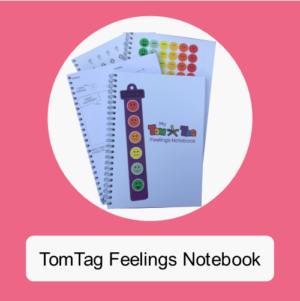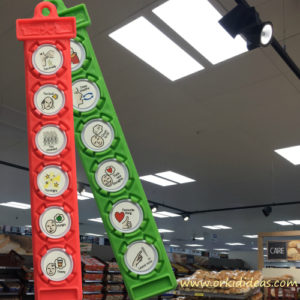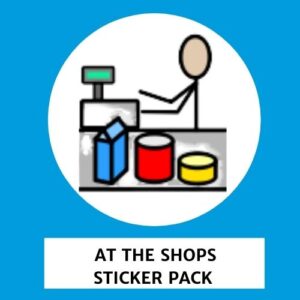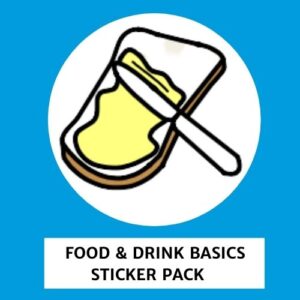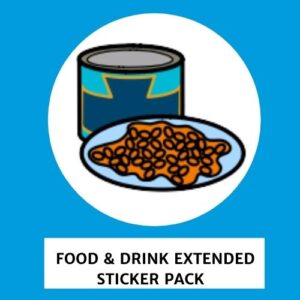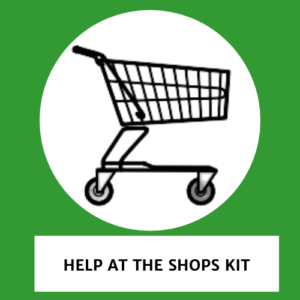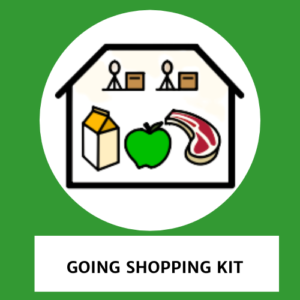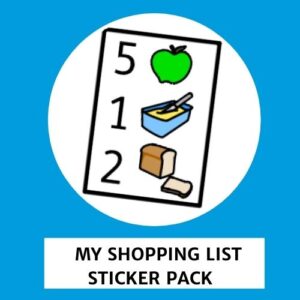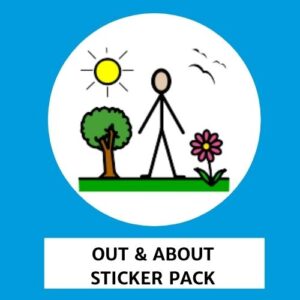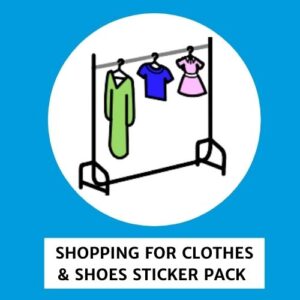Category: Product info
Feelings thermometer and diary
It’s often the simplest things that have the biggest impact.
A seemingly simple thing that gets forgotten, ignored or left unnoticed can cause a big problem down the line. Simple ideas, simple tools, simple changes might be all that’s needed to solve a problem or do a better job than a complex solution.
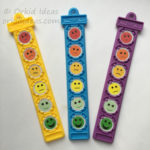 A Share how I feel tag, with its thermometer-style colour faces scale, has to be one of the simplest uses for the TomTag system but since introducing it less than nine months ago has become our best selling product. It can be used in lots of different ways which is perhaps one of the keys to it’s success – we’ve given some ideas in this free download guide.
A Share how I feel tag, with its thermometer-style colour faces scale, has to be one of the simplest uses for the TomTag system but since introducing it less than nine months ago has become our best selling product. It can be used in lots of different ways which is perhaps one of the keys to it’s success – we’ve given some ideas in this free download guide.
Having recommended in our guide that using a feelings diary can help to identify patterns of emotions or behaviour and the triggers that could be causing them, we decided to make our own!
My TomTag Feelings Notebook
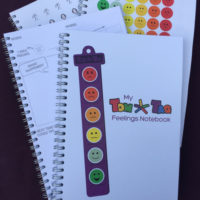 Keeping a diary gets you into the habit of noticing and naming how you feel in different situations throughout the day or at times when you feel most anxious or worried.
Keeping a diary gets you into the habit of noticing and naming how you feel in different situations throughout the day or at times when you feel most anxious or worried.
There’s a scale for rating the strength of your feelings and a guide to help build up a vocabulary to describe your different feelings and emotions.
By making notes about what happened during the day or at key points you can start to build up a picture over time which helps you to see patterns and identify the common triggers or stressors. Quite often these might be simple things that go unnoticed day to day but are easier to spot once patterns emerge.
It’s often the simplest things that have the biggest impact.
-
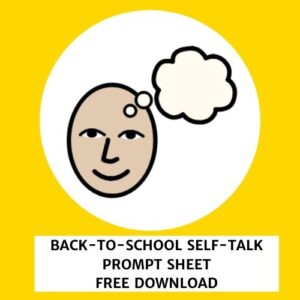
Back-to-School Self-Talk Prompt Sheet
-
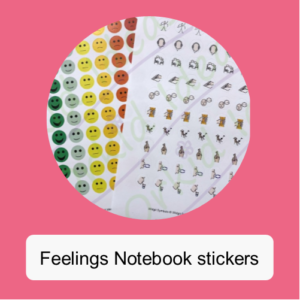
Extra sticker sheets for Feelings Notebook
-
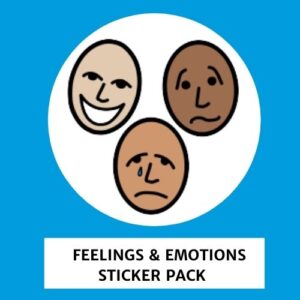
Feelings & Emotions Sticker Pack
-
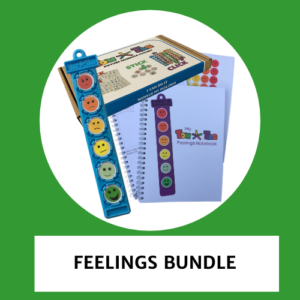
Feelings Bundle
-
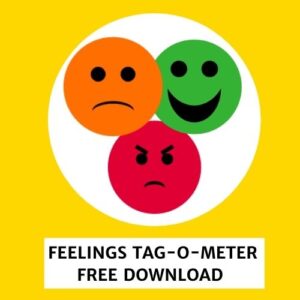
Feelings Tag-O-Meter
-
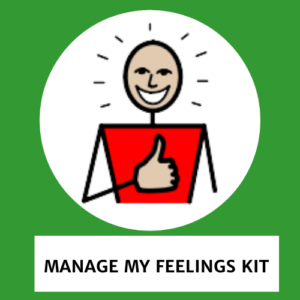
I Can Do It Manage My Feelings Kit
-
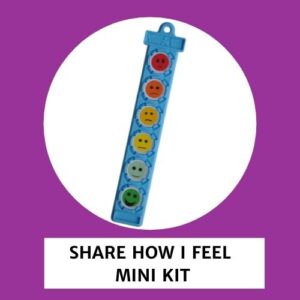
I Can Do It Share How I Feel Mini Kit
-

I Know What To Expect – My Vaccination Mini Kit
-

Phoebe’s Green Christmas Kit in collaboration with Embracing Arts & Christmas For Kids
-
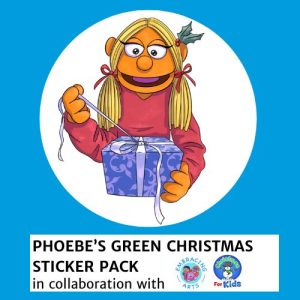
Phoebe’s Green Christmas Sticker Pack in collaboration with Embracing Arts & Christmas For Kids
Jayden’s TomTag review
TomTag Feelings tag-o-meter
The TomTag feelings tag-o-meter is a visual feelings thermometer that can be used to support the development of all the skills required for good emotional intelligence.
It can help children to understand and communicate their feelings. By linking with a visual reminder of appropriate actions and strategies, they can learn how to manage those feelings too.
Regular use of this type of visual scale helps children to recognise the causes and triggers for their feelings and emotions. They can work out ways to help themselves improve their responses and handle things better in the future.
Let’s get started
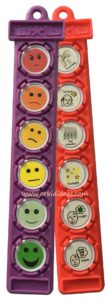 At the start of the school day it’s helpful to know how a child is feeling to assess their readiness for learning today. Use the feelings thermometer as a way for them to quickly and easily communicate this to you.
At the start of the school day it’s helpful to know how a child is feeling to assess their readiness for learning today. Use the feelings thermometer as a way for them to quickly and easily communicate this to you.
You might find it useful to provide a list of further options (like the red tag shown here) to help you identify the cause of any problems. For example, are they sad because they are hungry or tired, too hot or too cold, are the surroundings too noisy or bright?
Once any issues have been dealt with appropriately the child will be more able to access and engage with their learning.
What’s different
Are you expecting a change to routine, an unusual event or a visit to a new place today? Use the same approach to rate how comfortable the child is about this. If they are frightened, worried or anxious you can try explaining more about the reasons for the change or event or what they can expect to happen during the day or the visit.
Encourage the child to think about whether the strength of their feeling is in proportion to the situation. Does their reaction match the level of the problem? If not, discuss strategies they can use to deal with their feelings and talk about what a more appropriate response might be.
Get down to work
Before starting a task or activity, ask the child to rate their anxiety or confidence level about what they have to do. This information can help you to decide what support they might need to be able to complete the task successfully or it can open a discussion about whether their anxiety is proportional and realistic for the task faced. For example, are they:



How was that?
Revisiting the scale once a task, activity or event has finished offers an opportunity to reflect back and learn from it. Was their actual experience better or worse than they had expected it to be? How would they feel if they were now faced with the same event again?
If they were initially very anxious but with support were able to succeed, should this make them more confident about the next time they face the same task or a new one?
Another good time to check in with the feelings thermometer is after school, particularly as they may keep emotions locked up until they get home. Just as at the start of the school day, it’s a quick and easy way to communicate how they’re feeling and alerts you to any issues that have occurred during the day that might need further investigation or discussion before settling down to homework or evening activities.
What happened there?
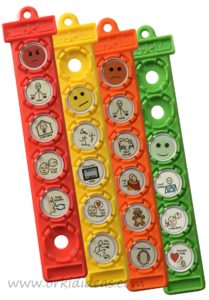 Sensory overload, changes to routine, difficulties processing information, social interactions or being tired or hungry are all common triggers for anger or challenging behaviour.
Sensory overload, changes to routine, difficulties processing information, social interactions or being tired or hungry are all common triggers for anger or challenging behaviour.
Getting a child to think about and try to understand what made them angry or prompted their behaviour begins to develop their emotional self-management skills. Using a feelings diary can be a good way to identify patterns of behaviour and incident triggers and plan for minimising stress at key points.
Encourage the child to use a feelings scale to start recognising how they feel or what their impulses are when their anger level starts to build. Set up some different coloured tags for each level like the ones shown here. Use each list as a reminder of suitable calming ideas they can try to help prevent their progress up the anger/stress scale and bring their feelings under control.
This technique can also be used to identify and respond to inappropriate behaviour from over excitement or a high arousal state.
Just saying
Children not only need to understand and interpret their own feelings, it’s important for them to be able to recognise the feelings of other people around them too.
When a child is familiar with using the feelings tag-o-meter to rate their own feelings and emotions, they can build their skills in appreciating other people’s feelings too.
As a parent, carer or teacher, you might want to let the child know that you are pleased with their work or attitude today. They may not have behaved well and you want them to understand that makes you sad. Reinforcing your words by showing them on the scale how you feel helps them develop their ability to recognise and interpret verbal and non-verbal emotional signals.
Let’s be friends
 You can take a similar approach when dealing with social interactions between the child and their classmates, friends and family. If there’s been a disagreement or incident, try using the feelings scale to help those involved communicate with each other about what happened, how they are feeling and how they might be able to better control their actions in the future. Our School Timetable sticker pack (included in the kit “I know what to expect at school”) has a number of useful behaviour-related symbols that would help with identifying positive strategies in these situations.
You can take a similar approach when dealing with social interactions between the child and their classmates, friends and family. If there’s been a disagreement or incident, try using the feelings scale to help those involved communicate with each other about what happened, how they are feeling and how they might be able to better control their actions in the future. Our School Timetable sticker pack (included in the kit “I know what to expect at school”) has a number of useful behaviour-related symbols that would help with identifying positive strategies in these situations.
The more practice a child has at acknowledging and recognising their feelings, using different coping techniques and appropriate communication strategies, the more relaxed and content they can be knowing that they have the skills to cope. A child who can identify his own emotions is more likely to be able to identify the emotions of others. Children who can see a situation from the view point of others are more able to engage in problem-solving and other social activities.
This guide is available as a free downloaded using the link below. The guide for this topic also covers the information in our post Understanding feelings and emotional intelligence.
-

Back-to-School Self-Talk Prompt Sheet
-

Extra sticker sheets for Feelings Notebook
-

Feelings & Emotions Sticker Pack
-

Feelings Bundle
-

Feelings Tag-O-Meter
-

I Can Do It Manage My Feelings Kit
-

I Can Do It Share How I Feel Mini Kit
-

I Know What To Expect – My Vaccination Mini Kit
-

Phoebe’s Green Christmas Kit in collaboration with Embracing Arts & Christmas For Kids
-

Phoebe’s Green Christmas Sticker Pack in collaboration with Embracing Arts & Christmas For Kids
Coping with going shopping
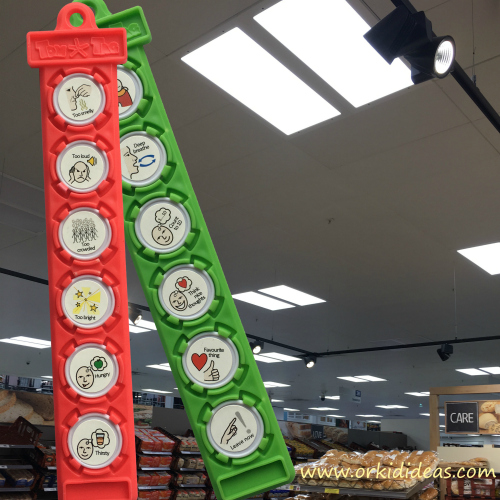
Many shopping experiences can be extremely difficult to cope with for autistic individuals and those who care for them. Changes to routine, difficult social interactions with strangers and overwhelming sensory experiences are just some of the issues that can cause stress, anxiety, fear and meltdowns.
So why do we bother?
 We all need food to eat and clothes to wear so going shopping is a necessary and important part of our lives. Online shopping can offer us a great alternative to physically leaving the house and going to the shops but it isn’t always the best way to get what we need or the ideal long term solution.
We all need food to eat and clothes to wear so going shopping is a necessary and important part of our lives. Online shopping can offer us a great alternative to physically leaving the house and going to the shops but it isn’t always the best way to get what we need or the ideal long term solution.
Shopping can help us develop good life skills. We need to plan and organise to make shopping lists or know which shops to visit. We need to understand money and budgets. Having strategies to cope with social experiences and sensory problems can increase our independence, reduce isolation and help us to be part of a community.
Start planning early
 Use a visual routine chart to introduce the idea of your shopping trip. Go at a quieter time of day or week if possible and give as much warning of the upcoming trip as you can. Sneaking in a last minute or surprise visit is best avoided.
Use a visual routine chart to introduce the idea of your shopping trip. Go at a quieter time of day or week if possible and give as much warning of the upcoming trip as you can. Sneaking in a last minute or surprise visit is best avoided.
You can use your visual chart to show how you will get there (e.g. car then walk), what sort of shop you are going to and what you need to buy. If you regularly use the same route or transport, try to stick to it or make sure you explain the change of route with visual prompts.
What’s going to happen?
Set up another visual list with more detail about what to expect in the kind of shop you are visiting. For example, at the supermarket you need to put things in a trolley or basket, walk together, queue at the checkout, put the shopping in a bag, then pay.
This preparation is particularly useful when shopping for clothes and shoes which can both be especially challenging shopping experiences. Preparing a simple social story and using a visual timeline will help you to talk about why we need to do this kind of shopping, what’s going to happen when you get there and what it might feel like.
Ask and answer questions
Why do we take our clothes and shoes off here but not in other shops or public places? Why does the shop assistant get close and possibly touch us when they need to find out what size we need?
Use the time before you go to ask and answer these sort of questions and think about the strategies you and your child can use to help them stay calm. You could even try some role-playing at home too.
Remember to take your TomTag visual prompt to the shops with you and use it as a reminder of the process once you’re there.
Sensory overload
Bright white lights, rows of brightly coloured objects, background music, strong smells and noisy crowds make supermarkets and shopping centres some of the most likely places to trigger sensory overload, leading to meltdowns and consequent behaviour issues.
Try using ear plugs or defenders to dampen noise and dark glasses or peaked caps to reduce the light intensity. Avoid strong smelling areas of shops such as washing powder aisles or perfume sections.
Keep a visual list handy so your child can show you what they are having problems with (too bright, too noisy, too smelly, thirsty, hungry, etc.) and pair it with a list of strategy symbols (deep breathe, count to 10, need to leave, etc.) that you can use to remind them of suitable self-help solutions.
Keep them busy
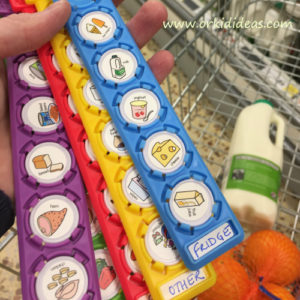 Giving your child the responsibility for finding items on your shopping list is a great way to avoid boredom and focus their energy. You can also make up games to keep them interested; for example, be the first to find 3 items on your list and turn the symbol over when you find them.
Giving your child the responsibility for finding items on your shopping list is a great way to avoid boredom and focus their energy. You can also make up games to keep them interested; for example, be the first to find 3 items on your list and turn the symbol over when you find them.
Involving children in helping to prepare the shopping list at home before you go can also be a useful way to encourage engagement and interest.
You might want to take a favourite toy or fidget or let them use a computer tablet or phone as a distraction as well.
Make your own planners and checklists
We used the kit I know what to expect going shopping with the optional symbol packs My shopping list and Shopping for clothes & shoes but TomTag is a versatile system with the flexibility to choose from a range of toolkits or put together your own combination of components and symbol sets. Links to all products below.
This guide is also available as a free download using the link below.
TomTag tips and tricks
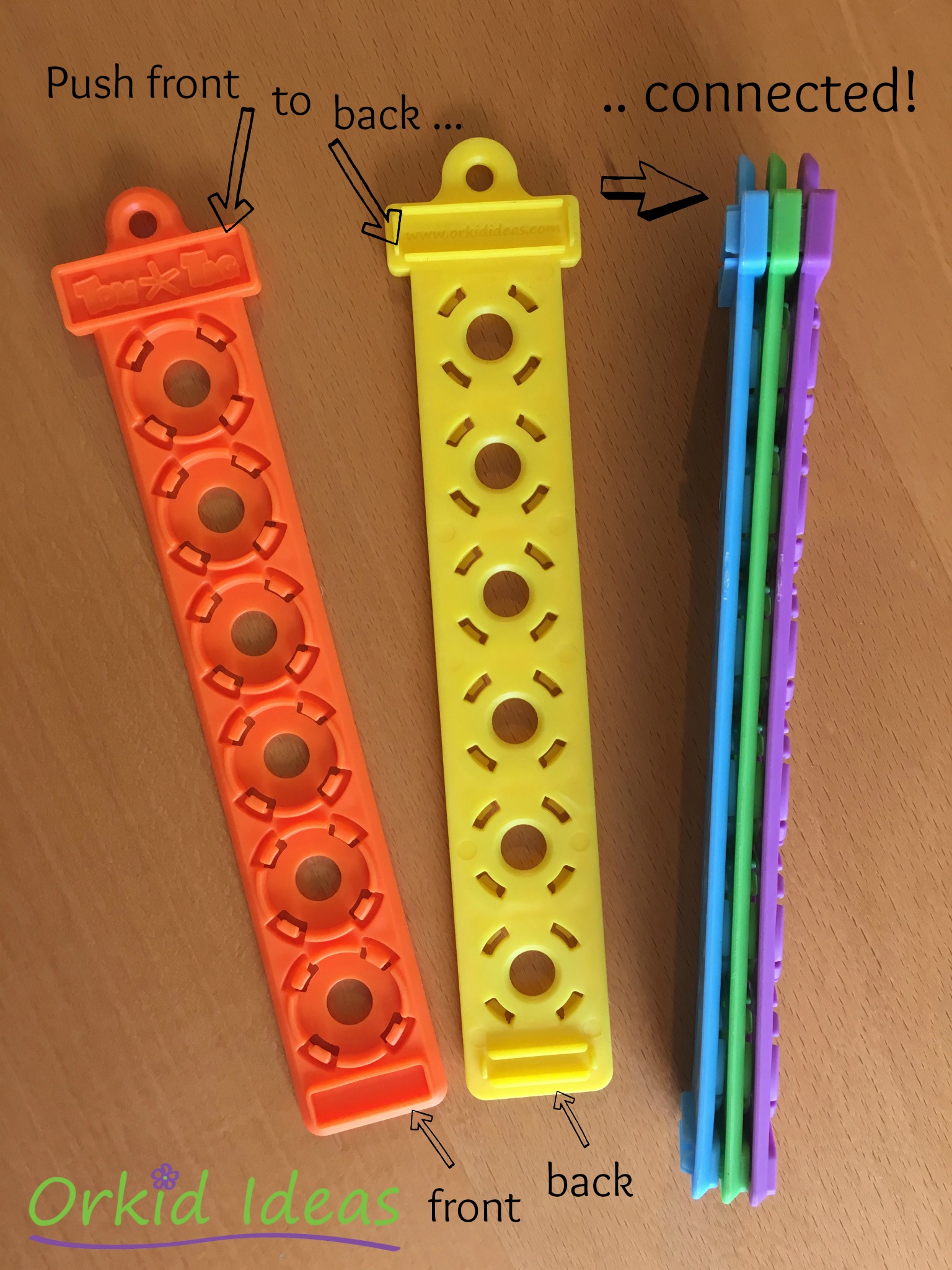
Tips and tricks when using TomTag
We know that one of the things you really appreciate about TomTag is it’s simplicity and easy of use.
That means that sometimes we forget to shout about some of the more subtle design features we included. We’ve also picked up some interesting ideas along the way from our own experience and that of our customers and we’d love to share them with you.
So, here goes!
Locked in
Ever noticed those ridges at the top and bottom on the reverse of each tag but never been sure what they’re for? That’s our tag lock feature!
Simply line up the back of one tag with the front of another and squeeze together, making sure that the raised ridges on the back sit inside the rectangular areas at the front as you do so. Repeat with the rest of your tags.
Particularly helpful when used with our I can do it pack my bag for school set to prevent tags flapping or moving around too much when being carried on a school bag.
We’re here!
 Need some spare buttons or want to try a new sticker pack but can’t remember the website address? It’s right here, on the back of every tag!
Need some spare buttons or want to try a new sticker pack but can’t remember the website address? It’s right here, on the back of every tag!
No need for Google – just turn over a tag.
Heads or tails
 The natural and obvious way to place TomTag buttons in a buttonholder/tag is with the flat, stickered side facing upwards. After all, we want to see those symbols, don’t we? What about once the task or activity shown in the symbol has been completed?
The natural and obvious way to place TomTag buttons in a buttonholder/tag is with the flat, stickered side facing upwards. After all, we want to see those symbols, don’t we? What about once the task or activity shown in the symbol has been completed?
A very visual strategy can be achieved by popping out each button, turning it over and placing it back in the same space in the holder to indicate that the task has been done before moving onto the next item on the list.
Rewards
 Think TomTag is just for making lists? Think again!
Think TomTag is just for making lists? Think again!
Use a tag, some blank buttons and star stickers to encourage positive behaviour or to incentivise a reluctant child. Give a star button to pop in their tag each time they display the required behaviour or complete a set task and perhaps agree a treat they will receive once their tag is full.
Take it away
 You’ll already know what the small hole at the top of each tag can be used with our attachment loops to join tags together or hang individual tags in handy places.
You’ll already know what the small hole at the top of each tag can be used with our attachment loops to join tags together or hang individual tags in handy places.
You can make TomTag even more portable by using that small hole to attach a keyring, belt clip or lanyard to one or more tags so that they can be carried on the person. This is a really useful idea when using TomTag to promote good behaviour at home or school – handy for teachers or parents to carry with them so they can quickly show the relevant symbol or list as a reminder.
Here’s a picture one of our customers sent to us – she’s a very busy bee and likes to know she can always check what’s happening next during the day, wherever she is.
We’ve been thinking for some time about introducing lanyards with our TomTag logo – what do you think? Would this interest you?
Over to you
What would you add to this list? Have a novel way for using TomTag? Let us know and we’ll share your ideas too.

